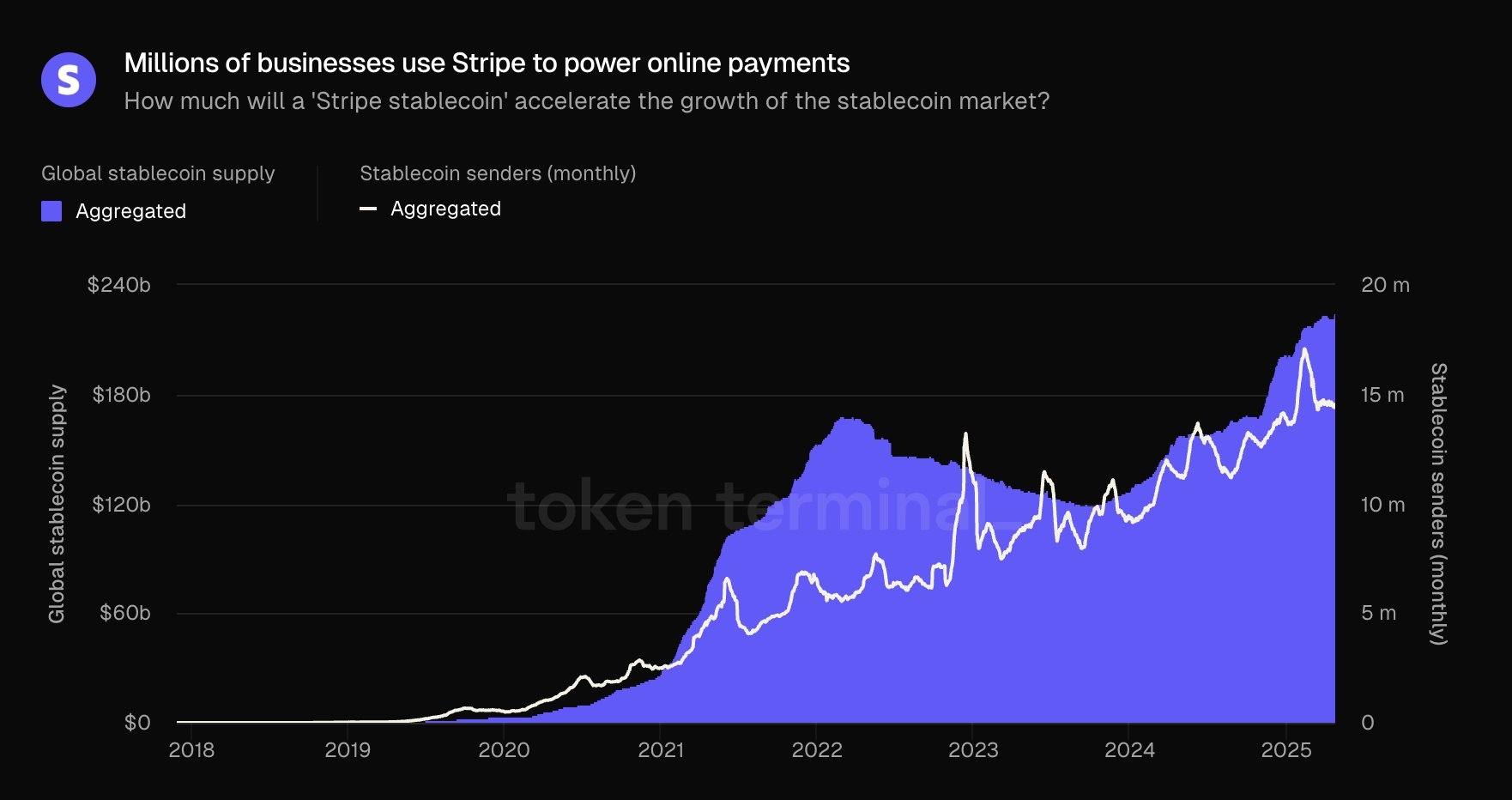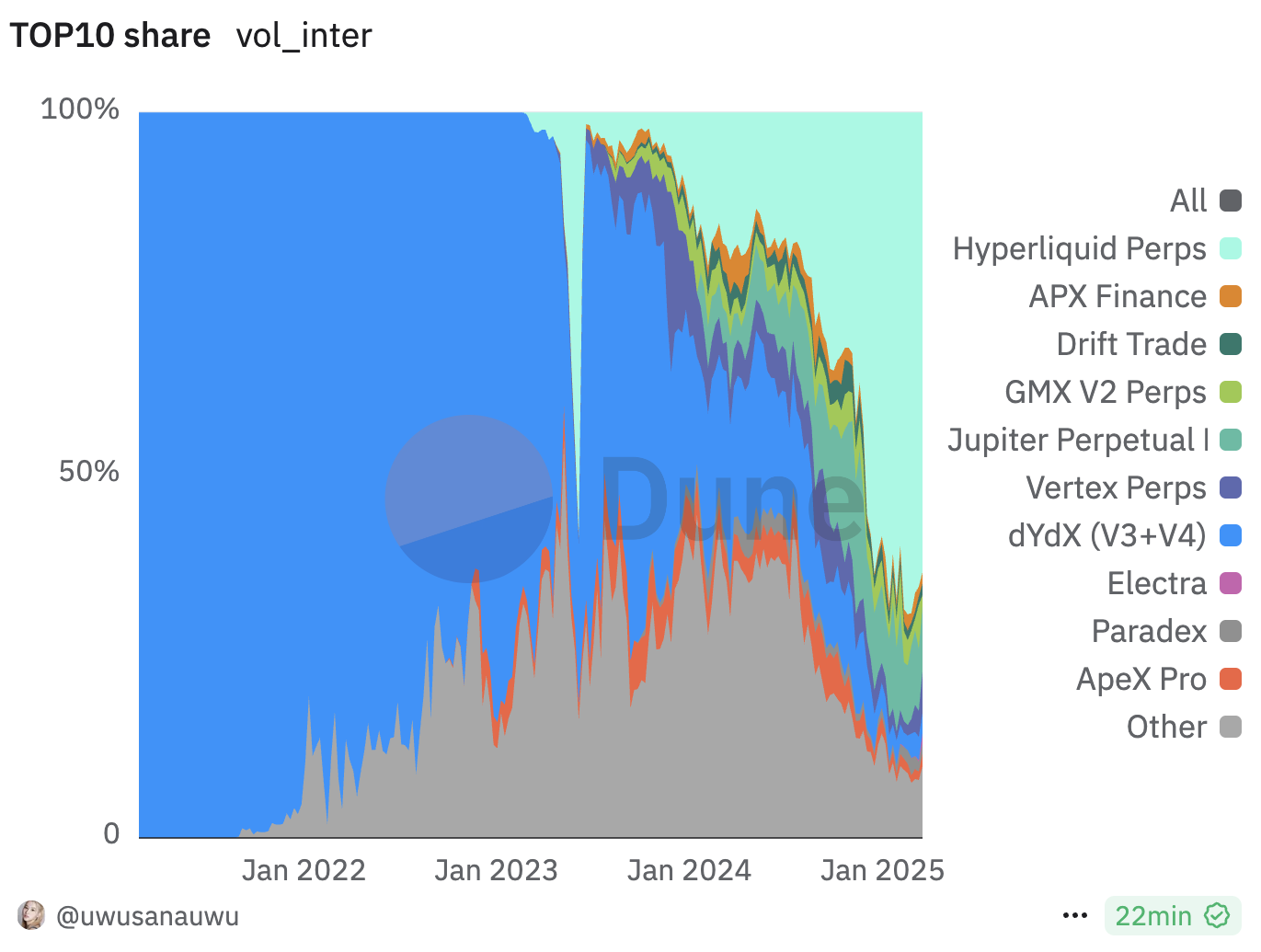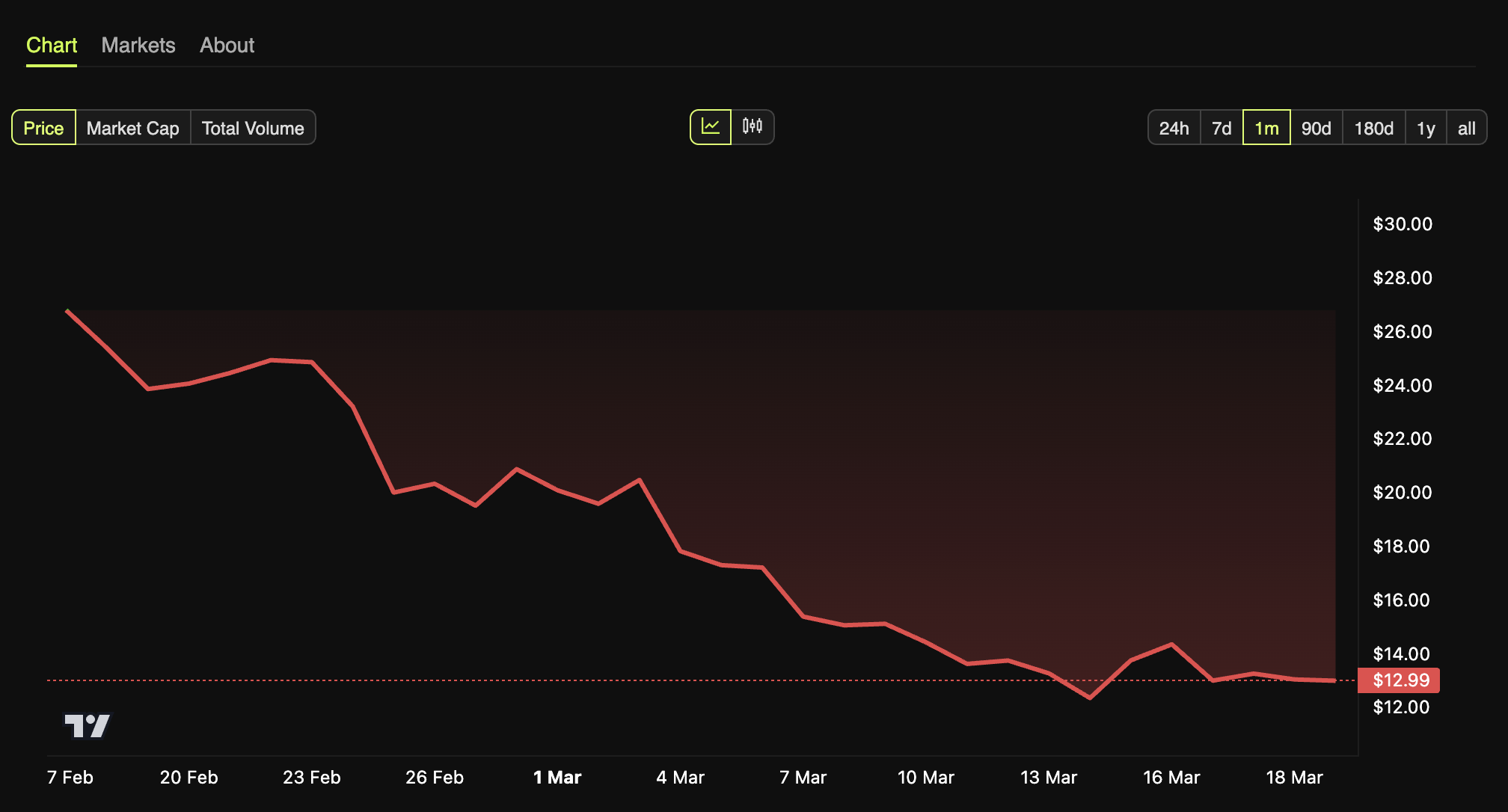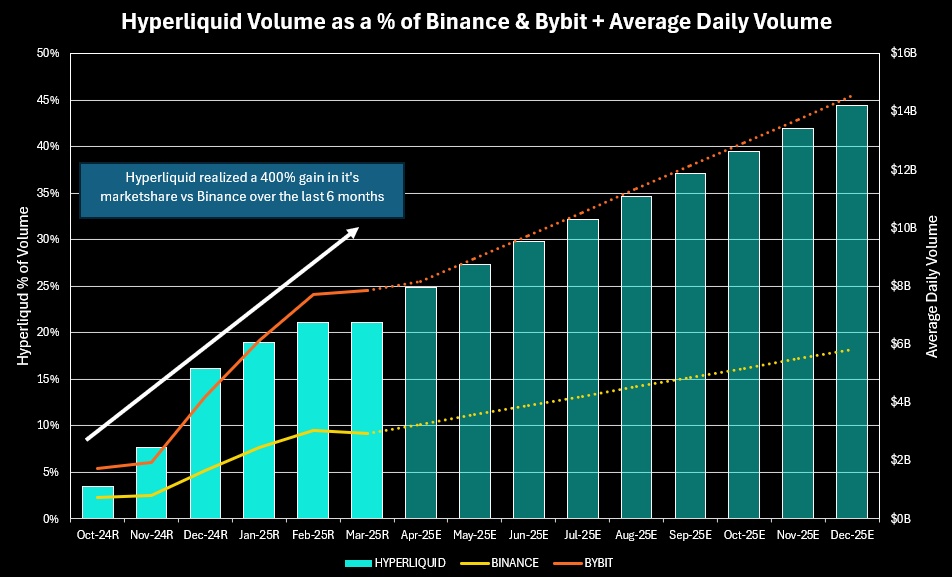Pi Network has recently witnessed a 12% price rally, briefly reaching $0.65 during intra-day trading, only to fall back down to $0.61. Despite this uptick, the altcoin has struggled to break free from consolidation, as weak investor sentiment continues to weigh heavily on its price.
A glimmer of hope comes from an ecosystem announcement scheduled for May 14, which could offer some positive news and potentially trigger a more substantial rally.
Pi Network Is Losing Investor Interest
Investor sentiment surrounding Pi Network has been weak for the past month, with little to no interest from the broader market. This lack of enthusiasm has hindered the altcoin’s ability to break free from consolidation and achieve a sustained price increase.
This investor apathy has created a significant challenge for Pi Network, as it lacks the backing needed to push its price higher. While the market has shown some bullish tendencies, especially following the US Federal Reserve’s decision to keep interest rates unchanged, Pi Network has struggled to translate this into sustained momentum.
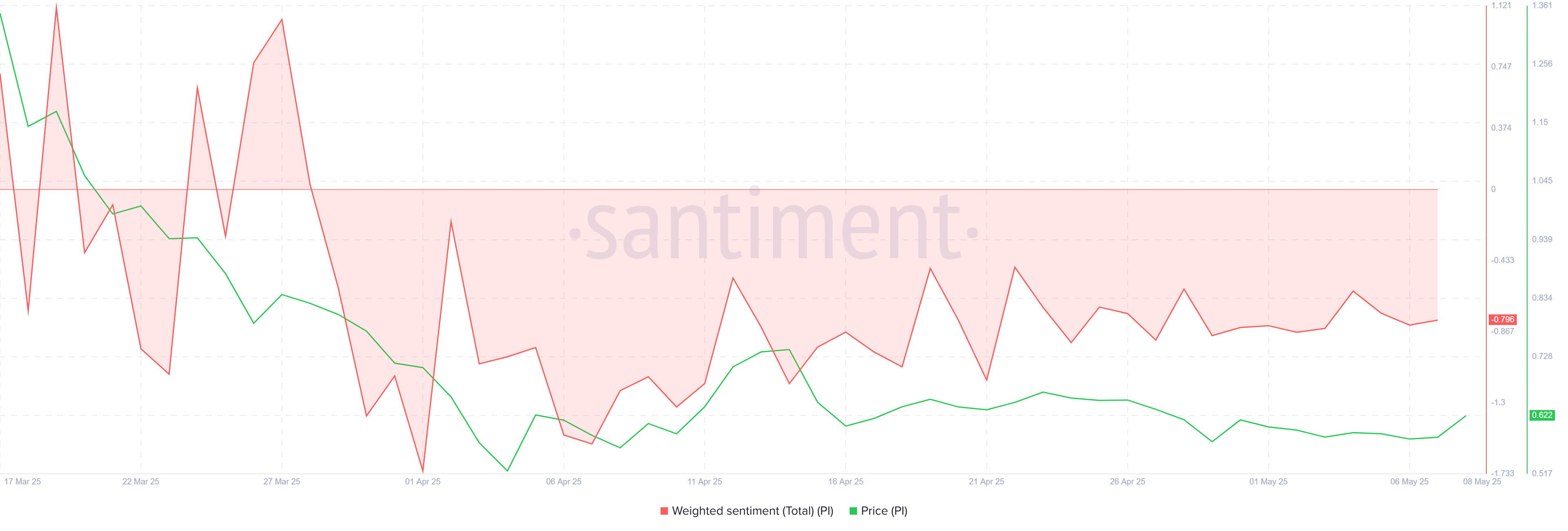
The overall macro momentum of Pi Network shows mixed signals. On the one hand, the MACD (Moving Average Convergence Divergence) indicator barely exhibits bullishness, with the histogram showing small green bars. While this suggests slight positive momentum, it is not enough to trigger a rally.
This indicates that the market’s broader bullish cues are preventing a bearish crossover, helping to keep Pi Network’s price afloat despite investor hesitation. However, the lack of strong bullish signals from the MACD means that Pi Network is still struggling to gain significant upward traction.
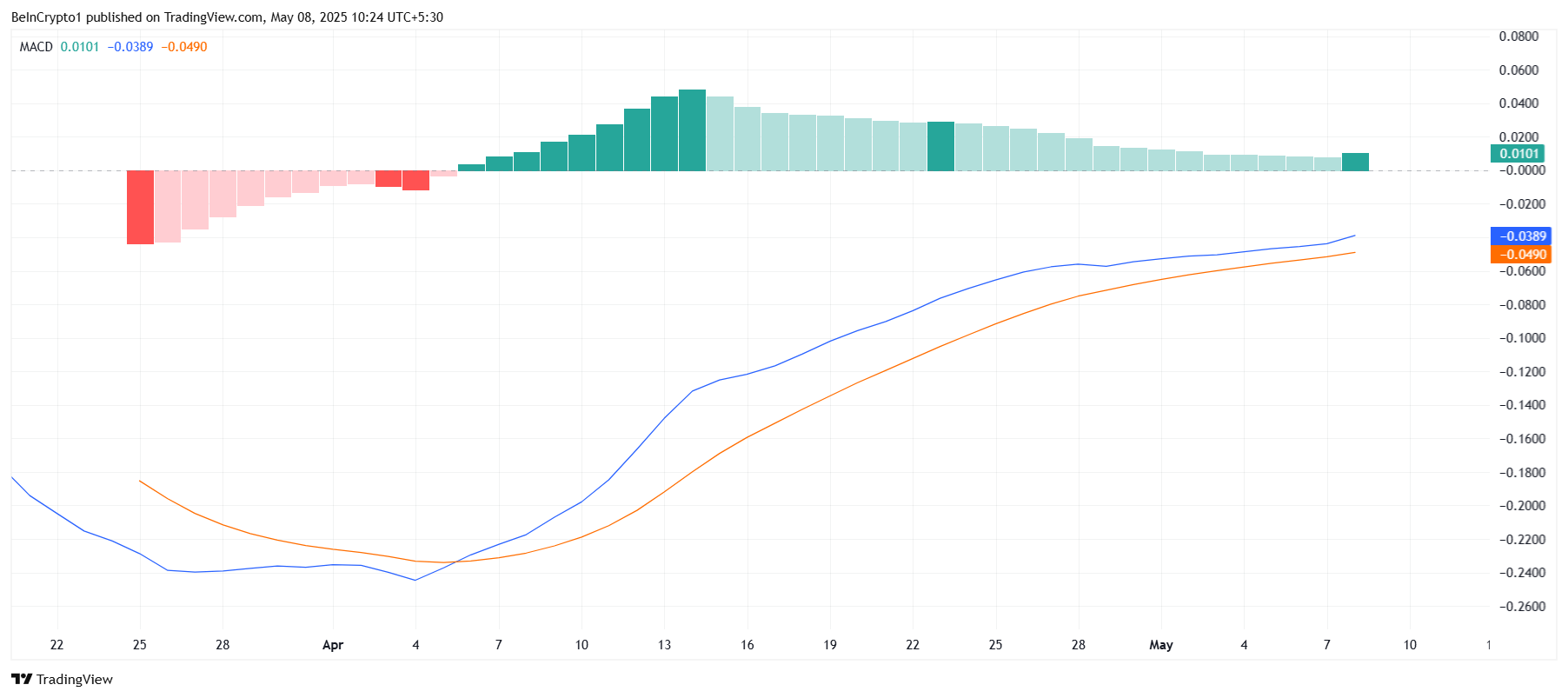
PI Price Can’t Catch A Break
Pi Network’s price grew by 12% over the last 24 hours, briefly reaching $0.65 before falling back to $0.61. This uptick was fueled by broader market bullishness following the US Federal Reserve’s decision to keep interest rates unchanged. However, the altcoin has struggled to maintain its gains, indicating a lack of strong support from investors to push the price higher.
Pi Network continues to consolidate, stuck between $0.61 and $0.57. This ongoing range-bound movement suggests that the altcoin lacks sufficient momentum to break out of its consolidation phase. The price will likely continue moving within this range unless both market and investor support are bolstered, which remains uncertain at this point.
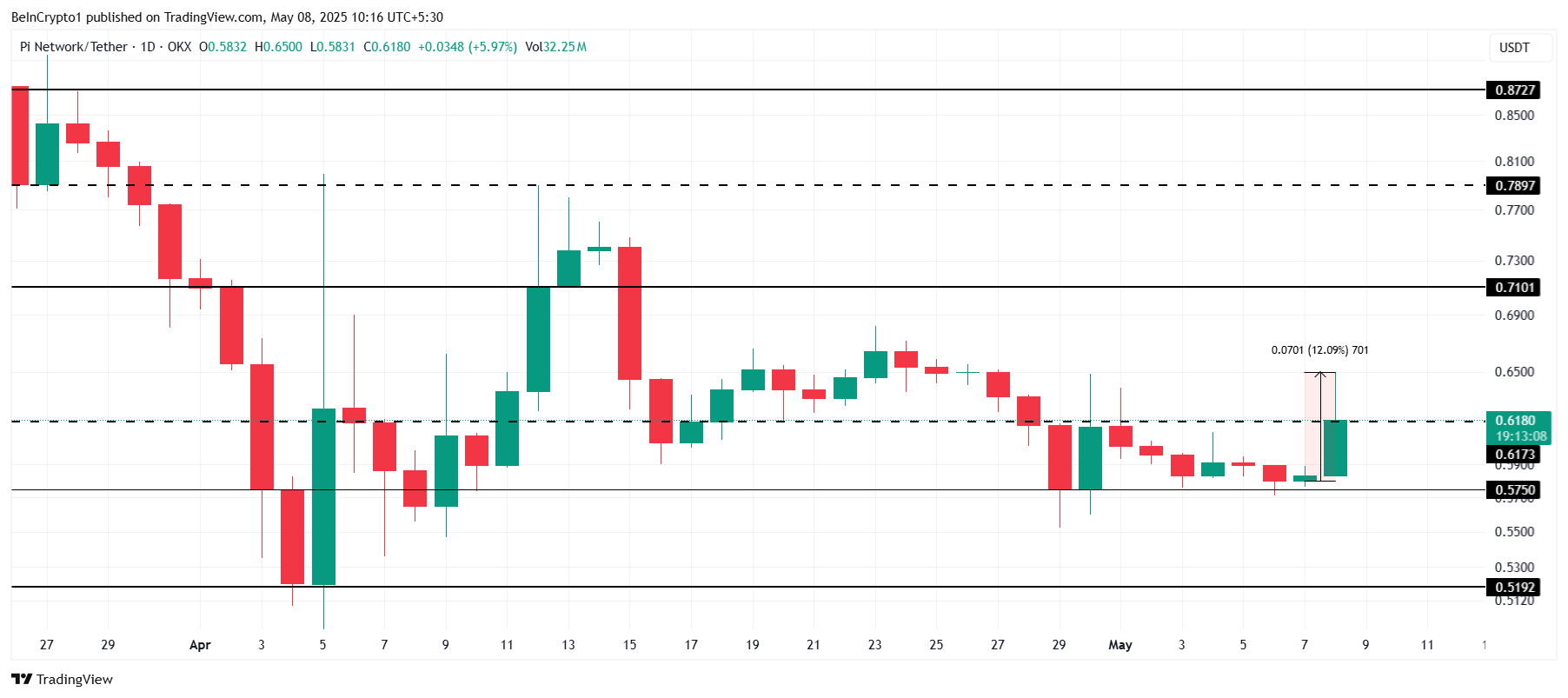
On the other hand, Pi Network could invalidate the bearish outlook if it secures $0.61 as support and begins to rise towards $0.71. Successfully breaching $0.71 could instill confidence in investors, potentially triggering a more substantial rally. However, without a clear shift in sentiment, the price may continue to struggle.
The post Pi Price Soars 12% in 24 Hours Ahead of Major Ecosystem Announcement appeared first on BeInCrypto.




